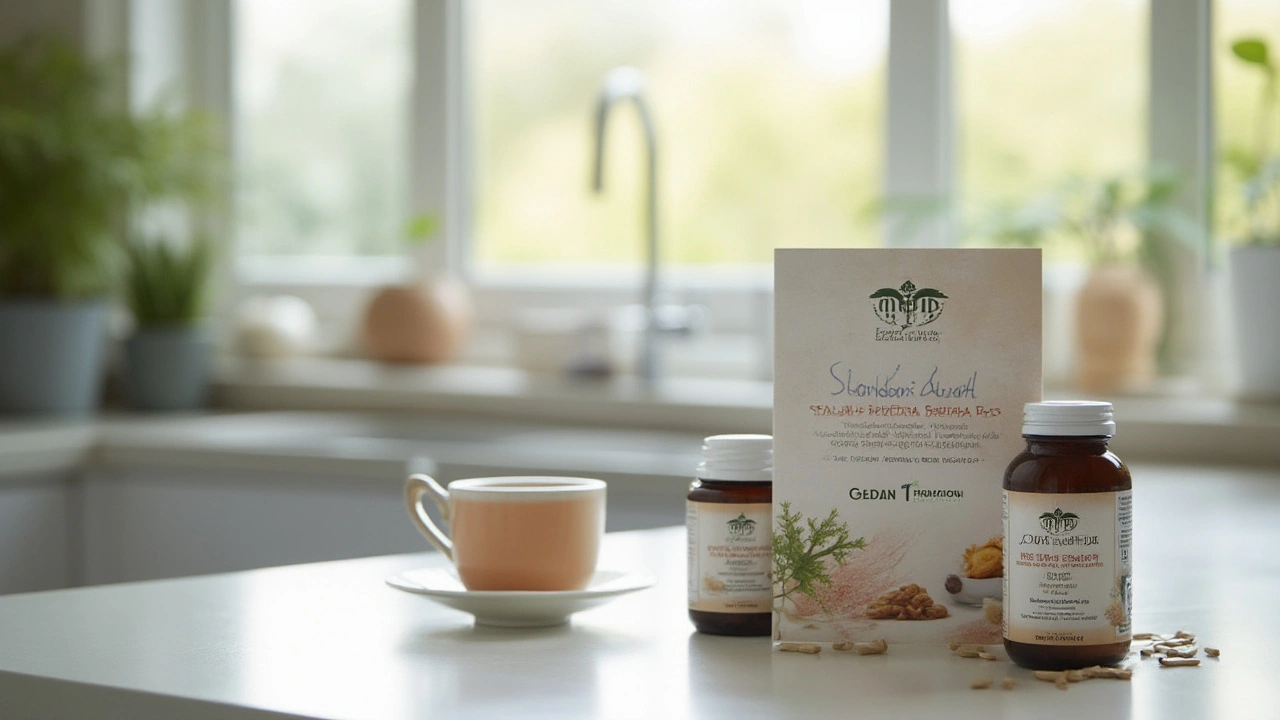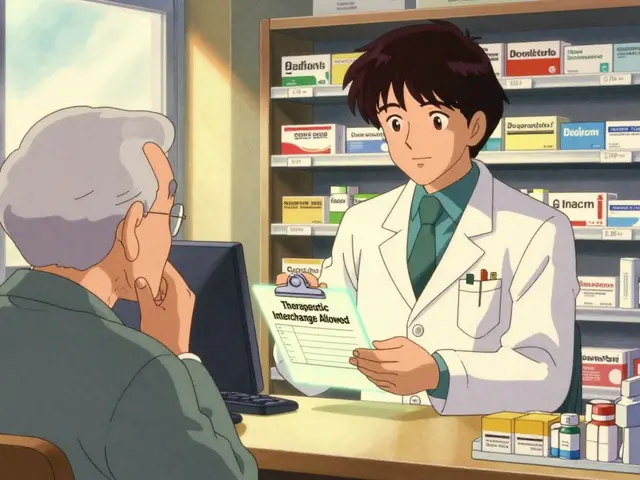The name might sound exotic, but here’s something that might surprise you—Shallaki has been used for stiff knees and aching backs long before words like 'arthritis' made the rounds. Go through almost any kitchen or medicine shelf in India, and you’ll find Shallaki, also called Boswellia serrata. This isn’t some ancient snake oil; it’s a resin tapped straight from tree bark, and people have been chewing, brewing, and slathering it on their skin for centuries. I’m writing from a city where rain soaks you for nine months and aches come for free—Seattle—and trust me, you want to know what Shallaki can do. Scientists are finally starting to catch up to what traditional healers have known all along.
What Exactly Is Shallaki? (And Why Are People Obsessed With It?)
If you walked into a health store and spotted a bottle labeled Shallaki, you might think it’s the name of a new yoga class. Nope. Shallaki—or Boswellia serrata—is a tree that grows wild in dry hills of India, North Africa, and the Middle East. People collect its sap, which dries into a hard aromatic gum. This isn’t your typical tree sap. When crushed, it smells a little like pine sap met a lemon grove.
What’s cool is that Shallaki’s main claim to fame comes from its resin, which packs unique compounds called boswellic acids. These are what do the heavy lifting for joints and inflammation. You’ve probably seen turmeric everywhere for similar reasons, but Shallaki works differently. Instead of targeting just swelling (the fancy word is 'inflammation'), these acids block enzymes—specifically, one called 5-lipoxygenase—that help create molecules causing swelling and pain. So yes, it tamps pain down at a chemical level.
For centuries, folks in India, Africa, and the Arab world have burned Shallaki as incense, brewed it into teas, or danced its powder into ointments. Modern supplement brands have picked up on the hype, selling capsules, tablets, creams, and even drink mixes—often with a hefty price tag. But the original bark resin is still used in Ayurveda and Unani medicine today, especially for arthritis, asthma, and gut health.
If you want to get even more geeky, look at what’s inside Shallaki resin: four major types of boswellic acids, most notably AKBA (acetyl-11-keto-β-boswellic acid). This one is the star performer, and researchers love it because it blocks key inflammation triggers that make your joints scream.
Now, you might be thinking this all sounds way too good to be true. But honestly, there’s real science (not just old wives’ tales) running in the background. Let’s check what the research says.
What Science Says: Breaking Down the Research
All right, you want numbers and facts? One of the bigger double-blind studies, published in the journal Phytomedicine in 2003, tried Shallaki on over 60 patients with osteoarthritis of the knee. People took 333 mg extracts three times a day for 8 weeks. The ones popping Shallaki felt less pain, walked easier, and showed lower swelling than those on a placebo. No fancy injection required—just a capsule. People started noticing less pain in as little as seven days.
There’s another study out of Germany, where researchers gave Boswellia extract to 30 patients with rheumatoid arthritis. They saw real improvement—less joint swelling and pain, and even fewer stiff mornings. And the list of side effects? Barely there. No ulcers, which are common with ibuprofen or naproxen, and no drowsiness. There was a slight risk of mild GI upset and a few headaches, but nothing major.
Want more proof? Scientists at Case Western Reserve University found that Shallaki’s star compound, AKBA, does more than just fight arthritis pain. It could halt cartilage damage and slow the progression of osteoarthritis altogether. They think this could be a game changer, especially for people who can’t take traditional painkillers.
Some research even points to Shallaki’s resin helping with asthma and inflammatory bowel disease (like Crohn’s or ulcerative colitis). For asthmatics, a 1998 clinical trial found Boswellia reduced shortness of breath and the need for rescue inhalers. Gut issues, meanwhile, seemed to calm down in patients using Boswellia supplements—sometimes even as much as prescription medication.
But—is Shallaki perfect? Not quite. Larger, longer-term studies are still missing. Herbal supplements don’t go through the same tough testing as FDA-approved meds, but early results are promising. Even the National Institutes of Health gives a cautious nod and says Shallaki boswellia serrata has potential as a safe, natural option for treating pain and inflammation.

How People Use Shallaki for Pain, Healing, and More
So, what does real-life use look like? People usually take Shallaki as a capsule, tablet, powder, or, less often, drink a strong tea made from its gum resin. Some even use it in skin creams. Dosages can range all over the map, but most modern supplements serve up around 300-500 mg of Boswellia extract per dose, standardized to about 65% boswellic acids.
Here’s how people commonly use Shallaki day to day:
- Joint Pain: Often paired with turmeric or ginger, it’s big among older adults for knees, hips, and hands that just won’t loosen up. Great for folks with arthritis or sore, overworked joints. No need for prescription painkillers every day.
- Post-Workout Recovery: Weekend warriors love Shallaki for beating back muscle soreness and swelling after a tough hike or gym session. Just make sure not to overdo it. The resin isn’t an instant fix, but it helps with ongoing aches.
- Asthma and Breathing: Some add a Shallaki capsule to their asthma care for fewer flare-ups, though it’s definitely not a substitute for inhalers in an emergency.
- Gut Health: People with colitis or Crohn’s use Shallaki powder or tablets to calm cramps and diarrhea. It supports the gut lining, and it’s less harsh than most pharmaceutical options.
- Skincare: Traditional balms and salves made with Shallaki resin are massaged onto bruises, sprains, or patches of eczema. The effect is mild but often enough to soothe stinging, red skin.
One thing: if you’re going to try Shallaki, look for extracts labeled with the amount of boswellic acids. Some cheap powders have little active ingredient, while others pump up the purity and potency. Word to the wise—watch for supplements mixed with fillers or additives. Stick to well-trusted brands, check for third-party testing, and read those labels like you’re hunting for a typo before sending an angry email.
For a little flavor, here’s a table showing daily Shallaki dosages for the most common uses:
| Use | Shallaki Dosage (mg) | Typical Frequency |
|---|---|---|
| Osteoarthritis pain | 300-500 | 2-3 times a day |
| Rheumatoid arthritis | 400 | Three times a day |
| Asthma | 300 | Three times a day |
| Gut health | 350 | Twice a day |
Check with your healthcare provider—the dose can vary depending on your needs and body weight.
Potential Side Effects, Myths, and What to Watch Out For
Nothing’s perfect, and that includes “natural” stuff. Shallaki is extremely well-tolerated in most people, but there are a few things to keep on your radar. For starters, occasional side effects include minor digestive issues—think bloating, upset stomach, or mild diarrhea. Folks with super sensitive tummies might want to start low and slow.
Some people have complained about mild headaches or allergic skin reactions if using the resin raw or as a topical balm. Nothing life-threatening, but if it happens, stop using it and see what changes.
If you’re pregnant or breastfeeding, or if you’re taking blood thinners or immunosuppressants, it’s smarter to talk to your doctor. Shallaki might interact with medications that slow blood clotting (like warfarin), so that’s not something to skip.
- Myth: “More is better.” Not so. Stacking on high doses doesn’t work faster—it just makes an upset stomach more likely.
- Myth: “Shallaki works overnight.” Really, you need a week or two to see big changes. Patience pays off; no lightning bolt cures here.
- Myth: “You don’t need modern medicine.” Shallaki supports—doesn’t replace—regular medical care.
You might see supplements with wild claims—like ‘cures cancer’ or ‘100% eliminates arthritis forever’—and those are big red flags. Reliable Shallaki products don’t make promises that sound like late-night TV ads. Look for honest labels, preferably with independent lab testing.

Tips for Buying, Storing, and Using Shallaki Right
If you’re convinced Shallaki’s worth a try, you’ll want to get the most bang for your buck. Picking a supplement can feel like a jungle, but a few solid tips keep you safe.
- Go with brands that show both the percentage and the amount of boswellic acids per serving. Anything less than 65% isn’t high quality.
- Skip any product that smells musty, has a weird chemical aftertaste, or gives you a headache right away—these can be signs of poor storage or contamination.
- Store pure resin or capsules in a cool, dry place. If using powder, keep the lid tight—humidity makes it clump and lose potency.
- Don’t double up with other anti-inflammatories unless your doctor says it’s okay. Combining too many can upset your stomach or even stress your liver over time.
- Pair Shallaki with a simple, healthy diet. Fatty, spicy, or processed foods ramp up inflammation and might blunt the effect a little. Simple change, real difference.
- If using Shallaki in skin balms, do a patch test—rub a small dab on your forearm to check for allergies before slathering everywhere.
- Read labels carefully—watch for artificial colors, fillers, or sugar. The purer, the better.
- Never skip your regular medicine without talking to your healthcare provider, especially if you have serious conditions like diabetes or heart disease.
Bottom line: Shallaki isn’t hype. It’s the real deal for a lot of people, especially those fed up with joint pain or looking for something less harsh than another round of painkillers. If you do it right—buy smart, start slow, and keep your doctor in the loop—you’ll know why this sticky tree resin has survived thousands of years of use.




April Yslava
July 1, 2025 AT 01:27Listen, the whole “natural remedy” hype is just a smokescreen for the shadowy pharma cartels that want us to stay dependent on synthetic pills. They’ve been quietly funding research that downplays Boswellia while pumping up patented NSAIDs. If you read between the lines, you’ll see the same lobbyists pushing opioids are also the ones quietly endorsing these “ancient” gums as a side‑effect free alternative-so they can later claim they warned us. The fact that the FDA only gives a cautious nod tells you there’s a massive data embargo. Every time a study shows a promising AK‑B‑A level, a press release disappears from PubMed. Meanwhile, big investors are buying up the few reputable Boswellia farms in India and locking out small Ayurvedic practitioners. It’s a classic monopoly play: let the masses try a cheap, unregulated version, then roll out an expensive, “standardized” extract that’s just synthetic filler. And don’t forget the hidden agenda of the climate‑change denial crowd who love these “green” products because they can market them as carbon‑neutral. The truth is, the resin is fine, but you’re buying into a narrative that keeps you glued to the market’s whims. They’ll tell you it’s all about “holistic health”, but it’s really about controlling supply chains. If the government really cared about pain relief, they’d fund open‑source trials and make the extract affordable for everyone, not just the wellness elite. So before you pop another capsule, ask yourself who profits when you feel a little less ache. The answer isn’t in the label; it’s in the lobbyist‑filled backrooms where decisions are made. Stay skeptical, read the fine print, and don’t let the wizard behind the curtain dictate your health.
Daryl Foran
July 22, 2025 AT 16:27The studies you cite are fine but the sample sizes are tiny and the control groups are not well defined. Also the dosage schedule seems arbitary and the data is not reproducable.
Rebecca Bissett
August 13, 2025 AT 07:27Wow!!! This really hits home!!! I can feel the relief just reading about it!!! The way the resin works on inflammation is like magic!!! I wish I could try it now!!!
Michael Dion
September 3, 2025 AT 22:27Sounds like another overhyped supplement.
Trina Smith
September 25, 2025 AT 13:27It’s fascinating how traditional practices intersect with modern research-sometimes they complement each other, sometimes they clash. 🤔 One could argue that the cultural context gives us a broader understanding of how to integrate such herbs responsibly. 🌿 Yet, we must also respect the empirical rigor that science demands. 😊
josh Furley
October 17, 2025 AT 04:27Honestly, the whole Boswellia hype is just another buzzword in the wellness industry. Simple: you can’t replace evidence‑based medicine with a resin that some guy brewed in a basement. The jargon about AKBA is just a marketing ploy, folks.
Jacob Smith
November 7, 2025 AT 18:27Hey, don’t let the negativity get you down! If you’re curious, give it a try but start with a low dose. You might find some real relief, and that’s a win. Keep it balanced with good food and movement-your body will thank you!
Chris Atchot
November 29, 2025 AT 09:27Just a friendly note: in your previous comment you wrote “you’ll thank you”; it should be “your body will thank you.” Also, remember to use a comma after “If you’re curious” for clarity. Keep up the supportive tone! 😊